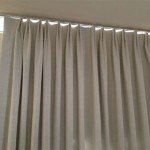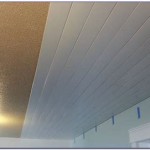Floor to ceiling room dividers are an increasingly popular choice for homeowners looking to make the most of their space, both in terms of privacy and design flexibility. These dividers, which range from simple screens to complex folding walls, provide a great way to divide a room without sacrificing aesthetics or functionality. In this article, we’ll look at some of the benefits of installing floor to ceiling room dividers, as well as some tips and tricks for making the most of them.
The Benefits of Floor To Ceiling Room Dividers
One of the primary benefits of floor to ceiling room dividers is that they allow you to divide a space without closing it off completely. This allows you to create distinct areas within a larger space, while still allowing some degree of interaction between these areas. For example, you could use folding dividers to separate a living room from a dining room, while still allowing conversation to flow between the two.
Another benefit of floor to ceiling room dividers is that they provide a great way to add privacy to a space. Folding walls, for example, can be used to create separate bedrooms within a studio apartment. This can be ideal for those who value their privacy, but don’t want to sacrifice the convenience of having a single, open-plan living area.
Finally, floor to ceiling room dividers can be a great way to add a touch of style to a space. There are a wide variety of dividers available, from simple screens to elaborate folding walls, so you can easily find one that fits your aesthetic. In addition, many dividers can be customized with different colors, fabrics, and patterns, allowing you to create a truly unique look.
Tips and Tricks for Making the Most of Your Dividers
Once you’ve chosen your dividers, there are a few things you can do to make the most of them. First, make sure you measure the space you want to divide carefully so that you don’t end up with dividers that are too small or too large. You’ll also want to consider the weight of the dividers, as some may be too heavy for the wall or ceiling they’re attached to.
It’s also important to think about the materials you’re using. If you’re using a folding wall, for example, you’ll want to make sure it’s made of a sturdy, durable material that won’t warp or crack over time. Additionally, you may want to add some padding to the wall to provide extra insulation and soundproofing.
Finally, if you’re using your dividers as a way to add privacy to a space, you may want to consider adding curtains or blinds to the dividers. This can not only help to block out light and sound, but can also add a touch of style to the space.
Conclusion
Floor to ceiling room dividers are a great way to add privacy and design flexibility to any space. By carefully measuring the space, choosing the right materials, and considering the addition of curtains or blinds, you can easily make the most of these dividers. With their many benefits, floor to ceiling room dividers can be the perfect way to divide a space without sacrificing aesthetics or functionality.














Related Posts









